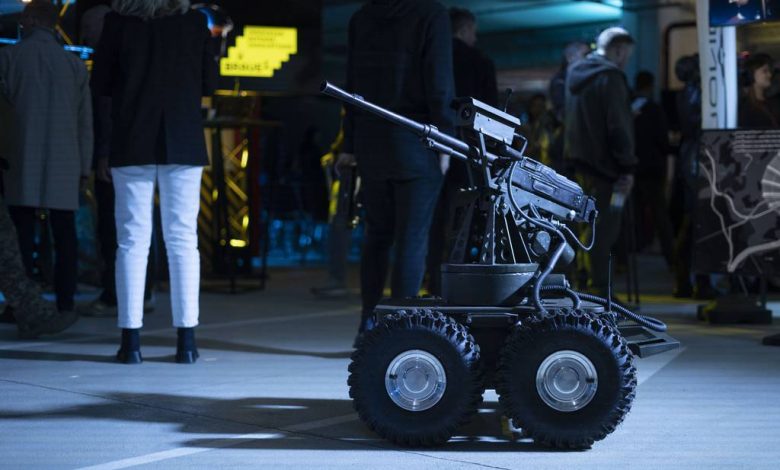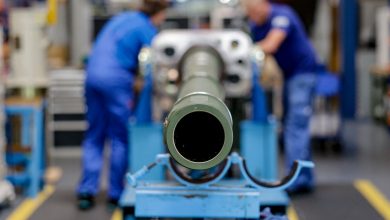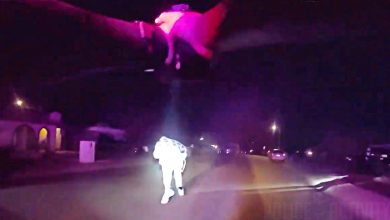Robot craze in Russia-Ukraine war shines light on their drawbacks

MILAN — Despite the notable lineup and exploits of crude ground robots seen whizzing over the battlefield in Ukraine, experts say deploying them in combat remains a costly affair in terms of labor and their vulnerabilities.
Since the appearance of a Russian unmanned ground vehicle, or UGV, in Ukraine in April 2022, several new prototypes have popped up across the battlefield.
The robot craze has seemingly engulfed both Russia and Ukraine, as evidenced by the former’s plan to make them an integral part of its military and the latter’s intention to create an army of robots. But the popularity of such systems predates the war by several years.
“Prior to its invasion of Ukraine, the Russian military was one of the global leaders in UGV research, development and evaluation. It developed multiple types and started trialing them, but did so in a very limited format,” according to Samuel Bendett, a Russia defense expert at the U.S.-based Center for Naval Analyses think tank. “It likely did not have enough time to develop tactics and concepts for integrating larger UGV numbers and types into combined arms formations.”
For its part, Ukraine approved the use of ground robots in military operations in 2016, but some limitations regarding their deployment have persisted, according to Serhii Kuzan, a former adviser to the Ukrainian Defence Ministry.
The two main issues he identified relate to the lack of higher numbers of UGVs present in military units and their vulnerability to different Russian countermeasures.
“Currently, the main problem is the relatively low saturation of such unmanned systems in Ukrainian units, but it is worth noting here that no European army could at the moment fully meet the needs for these robotic platforms,” said Kuzan, who is now the chairman of the analytics organization Ukrainian Security and Cooperation Center.
UGVs are as much of a target for enemy drones as are crewed armored vehicles, he added, except that the robots are also highly vulnerable to Russia’s electronic warfare tools.
Given the number of intelligence, surveillance and reconnaissance drones flying above the battlefield, developing larger “pre-February 2022 UGV types is a costly affair,” Bendett said, referring to the month Russia launched its full-scale invasion of Ukraine.
Another factor constraining the use of robots in combat is the absence of fully autonomous navigation in many platforms, hence the necessity for additional equipment dedicated to their protection.
“As there is no truly autonomous UGV yet that can navigate itself to [a] target, the vehicle’s remote control today is also aided by drones providing tactical overwatch, helping to guide it towards intended destinations in logistics, supply and evacuation operations,” Bendett said.
This makes sending out these vehicles “very manpower-intensive,” he added.
Despite these limitations, there are many examples of the effective use of such systems by Ukrainian forces. Experts agree Western countries are drawing lessons from these instances.
Kuzan noted that ground robots have predominantly proved successful in demining and cargo-transport missions, specifically citing the Ratel S UGV as a valuable system that can also be used as a ground-based munition.
These newer applications could signal a trend, as Russia is moving beyond using land robots in a primarily logistics role, with the development of its latest Buggy UGV designed to detonate upon reaching its target.
“What the Russian military is doing is emulating the concept of a loitering ammunition drone but basing it on an uncrewed ground system — same functionality, but driving to the target instead of flying into it,” said Alain Tremblay, the vice president of innovation and business development at Rheinmetall Canada.
Remotely operated or autonomous robots are the platforms of choice for this, as they can generally “embark a much larger explosive charge,” Tremblay added.
Elisabeth Gosselin-Malo is a Europe correspondent for Defense News. She covers a wide range of topics related to military procurement and international security, and specializes in reporting on the aviation sector. She is based in Milan, Italy.







